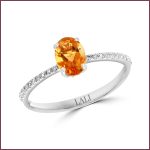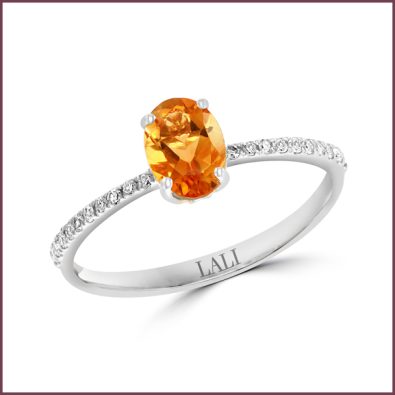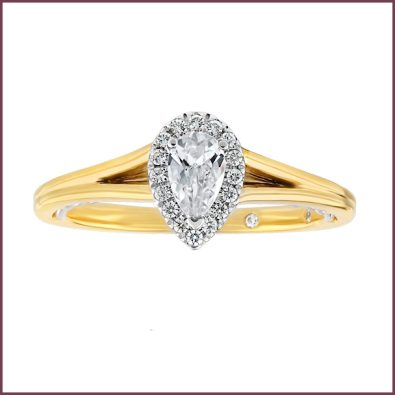Small Is Big
Small is the next large reports Unity Marketing, citing that a number of economic, cultural, and demographic trends are aligning to make the next decade a strong and potentially prosperous one for small independent local retailers who deliver new, different, personalized, specialized retailing experiences.
 In the news: Target is launching smaller stores under CityTargets name. Walmart is introducing smaller-scale stores as it seeks to expand into urban areas. Best Buy is focused on its community-oriented retail concept with a smaller-is-better philosophy. Pam Danziger, president of the Stevens, Pennsylvania based luxury market research firm, says the big story is not the downsizing of big box but the opportunity for small retailers. “You can make a Target, Walmart or Best Buy store smaller in size, but you can’t make them smaller at heart.”
In the news: Target is launching smaller stores under CityTargets name. Walmart is introducing smaller-scale stores as it seeks to expand into urban areas. Best Buy is focused on its community-oriented retail concept with a smaller-is-better philosophy. Pam Danziger, president of the Stevens, Pennsylvania based luxury market research firm, says the big story is not the downsizing of big box but the opportunity for small retailers. “You can make a Target, Walmart or Best Buy store smaller in size, but you can’t make them smaller at heart.”
Consumers demand a customer-centric retailing experience, says Danziger. While the Great Recession took out a swath of retailers, the successful ones that remain represent the best and brightest. Moreover, the consumer culture is turning a page in favor of social justice, supporting locally owned, independent retailers who contribute to the community. “The American Express-sponsored Small Business Saturday program and growing ‘Made-in-America’ movement support the concept of buying from small community-based independent retailers as an alternative to big, impersonal national brands.”
Danziger notes that the recession was a good time for big box and mass retailers. But the sameness and ubiquity of their in-store experience is tiring. “Consumers who’ve tired of the ‘austerity’ lifestyle are looking for something new and different. Independent retailers that survived are poised to offer that, unlike big box and mass retailers that keep offering the same stale options. Product alone no longer sets a retailer apart. Shoppers are Internet savvy; they only need to go to the store to get products if they want to. Faster delivery from all categories of online retailers has made that trip of necessity a notion of the past.”
New Retail Environments
A PricewaterhouseCoopers and TNS Retail study, Retailing 2015: New Frontiers, reports a more indulgent consumer increasingly seek out niche products and experiences uniquely suited to their tastes, interests, and aspirations.
A mega trend cited in Swarovski’s Gem Vision 2016 market research, “new retail environments” are generating fresh jewelry experiences in line with the latest evolution of immersive entertainments. “Spectacular new showrooms, galleries as well as luxury online platforms are redefining boundaries, creating interactive and personally relevant jewelry experiences, describes Cheryl Jester, trend & communication manager, Swarovski Genuine Gemstones and Created Stones, New York. “It’s a theme that runs throughout the luxury goods universe, but is especially significant in the jewelry world, where the purchasing environment is entrenched in tradition and often characterized by an elitist, one dimensional, outdated style of selling jewelry.” She describes jewelry boutiques now that double as cultural venues—hosting art exhibitions and musical soirees.
The Digital Divide
A big part of creating the retail experience is leveraging the potential of or meeting the digital expectations of your customers, cites a recent Deloitte study that says many retailers failing. “That gap, the new digital divide, puts at risk much more than just online shopping revenue,” says the report. “It poses a serious threat to overall revenue and a bold challenge to the way they respond to, and anticipate, customers’ shopping habits in-store. Traditional retailers are leaving too much money on the table and allowing strictly online retailers to capture a growing share of revenue that could be theirs.”
Digital devices’ influence on in-store purchase behavior is growing much faster than anyone anticipated. Deloitte’s research shows that digital technologies influence 36% or $1.1 trillion of in-store retail sales, and this number will likely increase to 50% of in-store sales this year: 84% of visitors report using digital for shopping-related activities before or during their most recent trip to a store. 22% of consumers spend more as a result of using digital—with just over half spending at least 25% more than intended. Consumers who use a device during their shopping journey convert at a 40% higher rate.
Digital is fundamental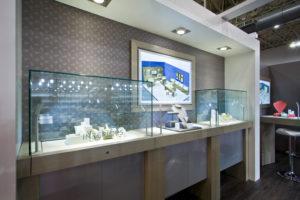 to the entire business and shopping experience, in and out of the store. “The fact that we can be in a store and compare price and value has changed our shopping habits in everything with the bottom line, says Andrew Kaplan, vice president of sales Rocket Redbox, Bronx, New York, who notes that if you don’t have free WiFi for your customers you’re doing them a disservice. “Consumers have come to expect WiFi access and if you don’t have it as a service to your customers, it’s a turn off.”
to the entire business and shopping experience, in and out of the store. “The fact that we can be in a store and compare price and value has changed our shopping habits in everything with the bottom line, says Andrew Kaplan, vice president of sales Rocket Redbox, Bronx, New York, who notes that if you don’t have free WiFi for your customers you’re doing them a disservice. “Consumers have come to expect WiFi access and if you don’t have it as a service to your customers, it’s a turn off.”
Explore how the digital and physical shopping worlds are merged through the lens of the customer experience. “There’s a variety of technology out there designed to enhance customer experiences,” says Emily Graffagnino, visual merchandising and packaging manager for Stuller, Lafayette, Louisiana. “A simple smell machine can take customers just about anywhere right from your store. Think about holiday time, customers smelling pine, sugar cookies, or peppermint. It creates a memorable experience.” She cites technology key for custom design, and advocates a designated space to consult over virtual inventory and customization options that many brands are offering their retailers.
Touch Points
The experience retailers create must be an integrated one where all the touch points dovetail, advocates Pam Levine, Levine Luxury Branding, New York, noting that the conversation is ongoing, in and out of the store. “The most engaging retailers are multi-layered, with curiosity a powerful motivator.”
Among the touch points, Levine cites: social media, website and ecommerce, advertising and collateral, traditional and new media, marketing, merchandise, selling channels, lighting, scent, pattern and texture, sound, gift packaging, fixtures and displays, store design, sales associates, and sales channels all create the customer experience.
You only have seconds to capture someone’s attention, and displays in particular play a critical role in bringing customers to the case. “Displays are silent sales associates and good displays make people want to ask about the merchandise,” advocates Patti Levi, vice president of sales for GemPak, a Quality Gold company in Dallas, Texas.
Retailers must understand their core merchandise groups and determine traffic flow as it pertains to store type and 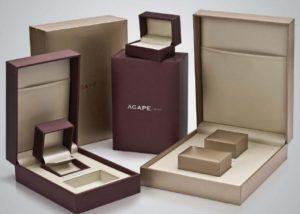 location, advises Denise Cabrera, product manager, display and packaging, Rio Grande, a Richline company in Albuquerque, New Mexico. “Observe how people move through your store. Get out from behind the counter to see what they see. How is the store set up, from broad categories to subcategories? There’s a lot going on to translate. Are displays too high or too low? Are there too many things in the case that make it difficult for customers to focus? Are you using risers and different levels to differentiate product? It’s important for retailers to build focal points.”
location, advises Denise Cabrera, product manager, display and packaging, Rio Grande, a Richline company in Albuquerque, New Mexico. “Observe how people move through your store. Get out from behind the counter to see what they see. How is the store set up, from broad categories to subcategories? There’s a lot going on to translate. Are displays too high or too low? Are there too many things in the case that make it difficult for customers to focus? Are you using risers and different levels to differentiate product? It’s important for retailers to build focal points.”
Experts advise showcases be easy for customer and sales associate to navigate, advocating product groupings, creating themes, use of signage with key information and displays that keep jewelry in place (i.e. magnetic and “Ice Grip”).
Moreover, packaging matters. It’s a core component of building a relationship between a brand and the end user. It impacts shopping behavior, influences product satisfaction and motivates consumers in different ways. Packaging design is critical in expressing a brand’s image and identity. High quality printing, distinctive design that supports the brand strategy and unique materials can help engage users and differentiate a brand in a crowded marketplace.
“Packaging play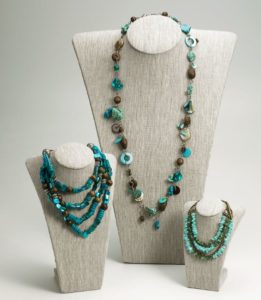 a role as the final close of the sale and continues to project your image into the homes of the consumer,” says Kaplan. “It’s a golden opportunity for brands to not only capture the attention of those receiving the gift but also those viewing its presentation. It’s important for retailers to personalize their packaging to reflect their brand image, especially small retailers and manufacturers looking for ways to stay top-of-mind.”
a role as the final close of the sale and continues to project your image into the homes of the consumer,” says Kaplan. “It’s a golden opportunity for brands to not only capture the attention of those receiving the gift but also those viewing its presentation. It’s important for retailers to personalize their packaging to reflect their brand image, especially small retailers and manufacturers looking for ways to stay top-of-mind.”
Levine also advocates adding to the packaging to enhance the experience. “People don’t expect more than a nice box. This is an area where jewelers can go beyond their customers’ expectations with a gift card, romance card, brand story, designer stories, branded guarantee, logo tissue paper and ribbon, different colors—make your packaging more important and take advantage of opportunities to further promote your brand and products whenever you can.”
The secret of success, advocates Danziger, is to know your customers and deliver the valuable, unique shopping experiences that these demanding, savvy, eager-to-be-pleased consumers crave.
